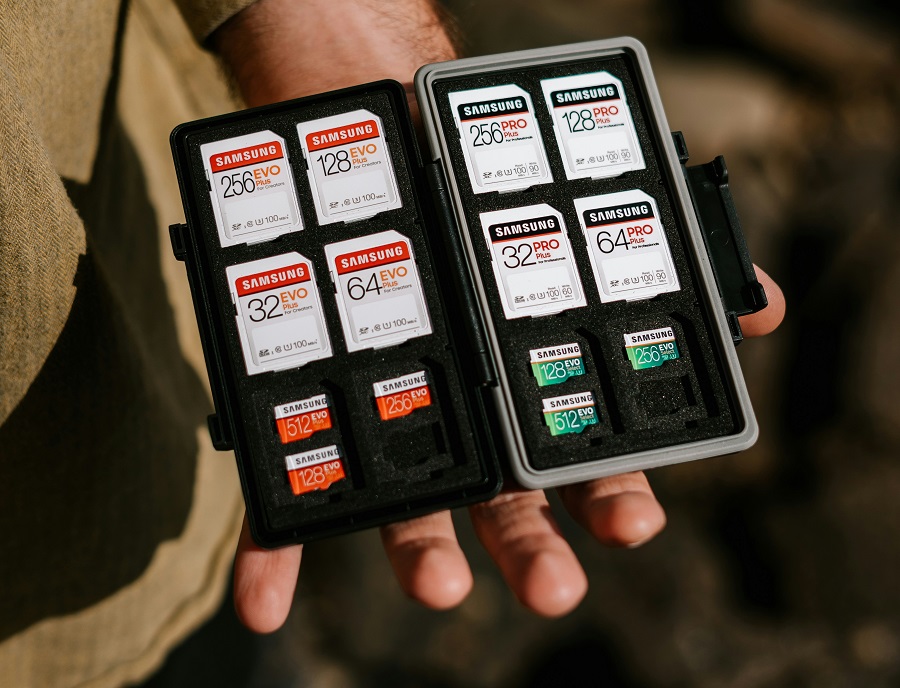Ever wondered how many photos fit on a memory card? The answer depends on two main things: the size of your card and the size of your photo files. For example, a 16GB memory card may store a few thousand JPEGs, while a 1TB card can hold hundreds of thousands of images. Factors like file format (JPEG, RAW, HEIC), resolution, and compression all play a big role in how much space each photo takes. In this guide, we’ll break down memory card capacities from 16GB to 1TB with charts, examples, and tips to help you choose the right size.
Memory Card Basics You Need to Know
Before figuring out how many photos a memory card can hold, it’s important to understand storage basics. A gigabyte (GB) equals around 1,024 megabytes (MB), but the usable space on your card is usually less than the labeled size because of formatting. This means a 32GB memory card might only give you about 29GB for photos. Also, keep in mind that memory cards store both photos and videos, so actual capacity depends on how you use them.
Average Photo File Sizes (JPEG, RAW, HEIC)
The number of photos a memory card can hold depends heavily on file size. A small JPEG might be only 2MB, while a high-resolution JPEG can reach 6MB or more. RAW files, often used by professional photographers, are much larger (usually 25MB to 50MB each). On the other hand, HEIC files, common on iPhones, are more efficient at 1.5MB to 2MB per photo. Knowing these average sizes helps you estimate how many pictures a 16GB, 64GB, or 128GB memory card can actually store.
Memory Card Size vs Photos Chart
To make things simple, here’s an estimate of how many photos each memory card can hold. These numbers are based on average file sizes: JPEG (4MB), RAW (30MB), and HEIC (2MB). Actual results may vary depending on your camera, resolution, and compression settings.
| Memory Card Size | JPEG (4MB) | HEIC (2MB) | RAW (30MB) |
|---|---|---|---|
| 16GB | 4,000 photos | 8,000 photos | 533 photos |
| 32GB | 8,000 photos | 16,000 photos | 1,066 photos |
| 64GB | 16,000 photos | 32,000 photos | 2,133 photos |
| 128GB | 32,000 photos | 64,000 photos | 4,266 photos |
| 256GB | 64,000 photos | 128,000 photos | 8,533 photos |
| 512GB | 128,000 photos | 256,000 photos | 17,066 photos |
| 1TB | 256,000 photos | 512,000 photos | 34,133 photos |
This chart shows why larger memory cards are better for RAW shooters and professionals, while casual users often find 64GB or 128GB cards more than enough.
How to Calculate It Yourself
You don’t need a special tool to figure out how many photos fit on a memory card. The formula is simple:
Memory card size (in MB) ÷ Average photo size (in MB) = Number of photos
For example, a 128GB memory card has about 131,000MB of usable space. Divide that by a 4MB JPEG, and you get around 32,000 photos. If you shoot RAW at 30MB each, the same card stores about 4,300 photos. This quick method works for any card size.
Which Memory Card Size Is Best for You?
The right memory card size depends on how you use your camera or phone. Casual photographers who take mostly JPEGs may find a 32GB or 64GB card plenty for daily use or vacations. Travelers who want to capture thousands of moments should consider 128GB or 256GB. Professionals shooting RAW files, weddings, or events often prefer 512GB or even 1TB cards for safety. For most people, 64GB–128GB strikes the best balance between storage, cost, and convenience.
Special Cases
Not all devices use memory cards in the same way. Smartphones, especially iPhones, save photos in HEIC format, which takes less space than JPEG, so a 64GB card can hold tens of thousands of images. Drones and action cameras often capture both photos and 4K videos, which quickly reduces storage capacity. Security cameras store continuous footage, so even a 128GB card may only last a few days. Knowing these differences helps you pick the right card for your specific device.

Beyond Size: Other Things That Matter
When choosing a memory card, capacity isn’t the only factor. Speed class is important, UHS-I or UHS-II cards allow faster photo transfers and smoother 4K video recording. Brand reliability also matters, as trusted names like Kingston or SanDisk reduce the risk of data loss. Keep in mind that formatting and the card’s file system (FAT32 or exFAT) slightly reduce usable space. Many photographers prefer carrying several smaller cards instead of one large card for extra safety and backup options.
FAQs
How many photos can a 128GB memory card hold in RAW?
On average, a 128GB card can store around 4,200–4,300 RAW photos, depending on your camera’s resolution.
How many photos fit on a 64GB SD card for iPhone?
With HEIC format, you can save roughly 30,000–32,000 photos, while JPEG will hold about 16,000.
Is a 32GB card enough for travel?
Yes, if you shoot mostly JPEGs. A 32GB card can handle around 8,000 photos, but videos will use space quickly.
Why does my 128GB card show only 119GB?
Cards use part of the space for formatting and file systems, so usable storage is always slightly less.
Do HEIC photos take less space than JPEGs?
Yes, HEIC files are more efficient, often half the size of JPEGs without losing quality.
Conclusion
Memory card capacity depends on both the card size and the type of photos you take. A 16GB card may only store a few hundred RAW images, while a 1TB card can handle over 500,000 HEIC photos. For most casual users, 64GB or 128GB is more than enough, while professionals may need 512GB or 1TB for RAW files and videos. Always remember card speed, brand reliability, and backups are just as important as storage size. Choose wisely, and you’ll never run out of space when capturing memories.



